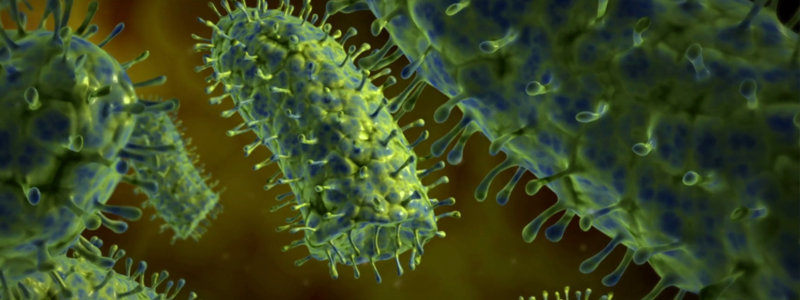BY: SAMANTHA BARTLETT, DVM
In a paper published last month, researchers found that the influenza virus is more prevalent and more varied amongst canines in China than previously thought. Canine influenza as we traditionally know it originated from an avian strain of influenza and adapted to infect mammals, specifically canines. To date, there have been no reported cases of canine influenza making the leap to a human. However, in a recently completed study of 800 dogs in south China that presented for respiratory symptoms, 116 were diagnosed with influenza. Of these diagnoses, 16 different genomes of influenza were mapped, many originating from a form of swine influenza similar to the form that caused the pandemic outbreak in 2009. The paper is entitled, “Emergence and Evolution of Novel Reassortant Influenza A Viruses in Canines in Southern China“, and was published in the June 5, 2018 edition of mBio.
Traditionally, swine flu originates from an avian strain and then adapts to infect swine by mixing with DNA of influenza strains normally carried in swine. Making the leap to dogs, the influenza virus yet again mixes with virus DNA in the dog, forming a novel strain. The potential s for alarm are obvious. As the virus jumps from species to species, it becomes more adapted to mammals and thus more easily spread amongst individuals. The other potential cause for alarm is the number and proximity of dogs in their relationships with humans making the probability of a virus adapting and spreading that much higher.
Many experts have weighed in on these findings and most seem to think that at this point there is no cause for panic. However, they all agree that closer monitoring of virus types and their spread amongst species is warranted. If need be, measures to prevent the spread of influenza virus between individual dogs should be considered and instituted if necessary. Many suggest that the same vaccines used in swine could be used in dogs.
To date, there are only two known active strains of canine influenza in the United States, H3N8 and H3N2. H3N8 was first described in dogs in the early 2000s and jumped from horses to dogs, mainly at racing tracks, then spread through shelters and other areas where high populations of dogs in close proximity were found. H3N2 is more recent and originated from birds and spread from South Korea and China to dogs in Chicago in 2015. The virus was later diagnosed in a shelter group of cats in Indiana. Since 2015, the H3N2 influenza virus has been diagnosed in dogs across the United States. Parts of the northeast from New York City to Philadelphia with some involvement into northern Virginia are the current areas of CIV activity. California and Nevada have been having active disease that seems to be subsiding. The outbreak in Canada has largely seemed to have been contained. Since the symptoms of influenza can resemble other causative agents of canine respiratory disease, it is possible that any number of cases have gone unreported due to the timeframe and cost of testing for influenza. For up-to-date information on outbreak locations, you can reference the Cornell influenza surveillance network at https://ahdc.vet.cornell.edu/news/civchicago.cfm.
The current consensus on the CIV vaccine is to continue to treat it as a lifestyle vaccine. Dogs that are at increased risk of exposure include those dogs that travel, board or go to day care, or participate in athletic or show events. The main source of movement of CIV from location to locations seems to be through animal shelters and rescue programs. More information on the prevention, treatment and handling of CIV can be found on the CDC and AVMA websites. The Cornell website also includes information on the appropriate samples and timing for testing for the presence of CIV.











